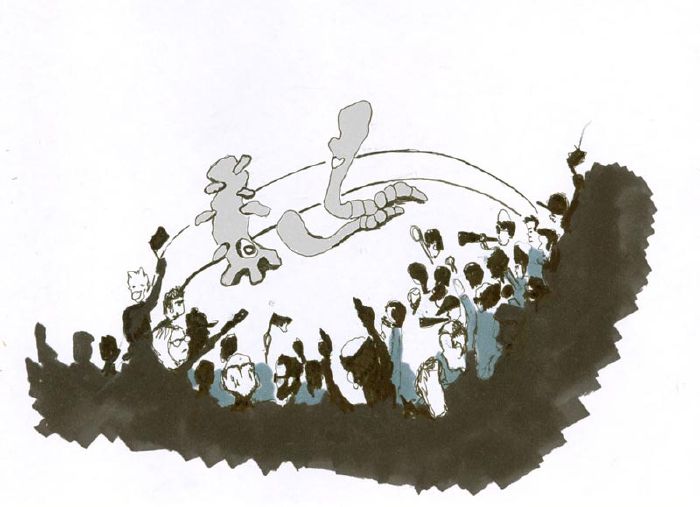"I am as free as nature first made man,
Ere the base laws of servitude began,
When wild in woods the noble savage ran."
[1]
The Migration of Destiny (more than a bacteria game)
Concept:
Charles Darwin developed his work "The origin of species" on a long journey. The sight of thitherto unknown landscapes and their respective flora and fauna enabled him to develop a general and formal concept of formation and development of the same – the evolutionary follow-up of Nature. We have developed a game play that enables us to observe bacteria on their journey through different landscapes. Our landscapes are made from agar and small samples of bacteria can be put into them by means of a pipette. There, one can observe in detail how landscapes may influence the behaviour and development of organisms (manifold landscape -> biodiversity?).
In our game, we are not only creators of the lands and territories, but we are also creators of species that live there. In our game, synthetically optimized organisms meet their natural ancestors. Players may observe throughout several generations how this encounter develops. The appropriate selection of barriers, bridges and fortifications makes it possible to individually influence the events. On the basis of their respective colours, one can recognize which bacteria live longest and which bacteria strains move fastest. All the time, it is up to the players if they prefer to build pretty landscapes or raise lissom bacteria which compete against each other in special arenas.
Setting:
A culture dish is the habitat and arena for the bacteria, consisting of coloured nutritious agar on the one hand, and transparent liquid agar on the other hand. In the liquid agar (the “oceans”), the bacteria move quickly; in the viscous food (the “continents”) they act more statically. Spatially confined from these areas, there are “fortresses” with gates and bridges. By means of a pipette and samples from various bacteria strains, this miniature world may come alive. Some of the bacteria are wild (wild type E. coli), others rather not - in fact, they are even very disciplined and (mostly) do what they are programmed to do. The synthetically cultivated bacteria are initially kept in fortresses (forts), separated from the surrounding landscape. Within these fortresses, these bacteria are - behind safety glass and fences - optimized as a predator-and-prey system - potent and highly efficient agents. Everything unimportant is kept away from them, their world only consists of hunting and eating to survive. The predator starves to death if there is no prey. Around the fortress extend varied landscapes which are inhabited by “indigenous” wild bacteria. Some of those can be discriminated by their pigment colors. Normally, the Wild and the Civilized live on separate continents. We - the creators of this world - may now open the gates of the fortress / the borders of the continents. What will happen when both meet? Will the hunters have advantages compared with their peaceful conspecifics? What will happen when prey meets peaceful bacteria. Who will consolidate their future? How colorful will this future be? By transferring the bacteria to new culture dishes with new fortresses and territories again and again, the further development of the bacteria may be modified and diversified.
Further planning:
Design of a "game set" with a petri dish, samples from wild type bacteria (non-glowing E. coli and glowing Photobacterium spec.), tooth picks, small modular bricks to build fortresses in the dish, a construction manual for the fortresses, a small quantity of agar, nutrients to mix with the agar and a set with three dishes for people who want to inoculate their bacterias for training purposes.
Competition between different wild type strains could be placed everywhere since there is no S1 safety condition required for that. Players could meet each other wherever they want. Swarming could be even more challenging at different temperatures (swarm matches: home and away, evolved bacteria at the edge of a swarm ring will be collected for next match - "never change a winning stream"). One could also think about a kind of championship for synthetic bacteria in a special "arena" (located in an S1 Lab).
